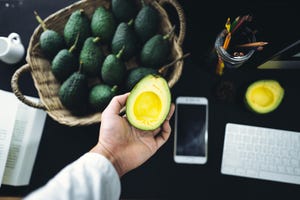AI-Powered App Aims to End Avocado Ripeness Guesswork

Key Points
- OSU and FSU researchers trained an AI on over 1,400 iPhone photos of Hass avocados.
- The model predicts avocado firmness with more than 90% accuracy.
- It identifies the narrow 15‑second window between firm and overripe fruit.
- Avocado waste contributes to the near‑one‑third food‑waste problem globally.
- The AI tool aims to help consumers and retailers reduce avocado spoilage.
- Future versions could extend the technology to other perishable foods.
- The project supports U.S. goals to cut food loss in half by 2030.
Researchers at Oregon State University and Florida State University have created a smartphone‑based artificial‑intelligence tool that can predict avocado firmness with more than 90% accuracy. By analyzing subtle cues in photos, the model tells users when a Hass avocado is perfectly ripe, helping shoppers and retailers avoid the narrow 15‑second window between hard and overripe fruit. The technology targets the massive waste of avocados—estimated at nearly a third of all harvested produce—by giving consumers a reliable way to time consumption, with broader applications envisioned for other perishable foods.
The Problem of Avocado Waste
Avocados are prized for their flavor and nutritional value, yet they are among the most wasted fruits worldwide. Over‑ripeness leads to a short window—often described as a 15‑second period—between a firm, usable fruit and a mushy, discarded one. This rapid transition contributes to the broader issue of food waste, which accounts for nearly a third of everything grown for human consumption. In the United States, federal agencies have pledged to cut food loss in half by 2030, prompting innovators to seek tools that can help consumers and retailers make smarter decisions.
The AI Solution
Scientists from Oregon State University (OSU) and Florida State University (FSU) responded by training a deep‑learning model on more than 1,400 iPhone photos of Hass avocados. The AI examines subtle variations in texture, color, and shape that are difficult for the human eye to discern. According to OSU assistant professor Luyao Ma, the model can predict firmness—the key indicator of ripeness—with over 90% accuracy. While the app is not yet publicly available, the researchers intend to release a consumer‑facing version that runs on standard smartphones.
Potential Impact on Consumers and Retailers
The technology promises to empower shoppers with a reliable, non‑invasive method to assess avocado readiness, reducing the guesswork that often leads to premature purchase or missed eating opportunities. Retailers could also benefit by timing shelf placement and promotions more precisely, potentially lowering inventory losses and improving profitability. Ma emphasizes that avocados are just the beginning; the same AI approach could be adapted for a wide range of perishable items, offering a scalable solution to food‑waste challenges across the supply chain.
Future Outlook
Beyond the immediate convenience for consumers, the AI tool aligns with broader sustainability goals. By extending the usable life of avocados and other produce, the model contributes to the national objective of halving food waste by 2030. The researchers envision a future where similar smartphone‑based AI applications become commonplace, guiding everyday decisions about food freshness and helping to preserve resources on a global scale.